How Will AI Robots Change the Future
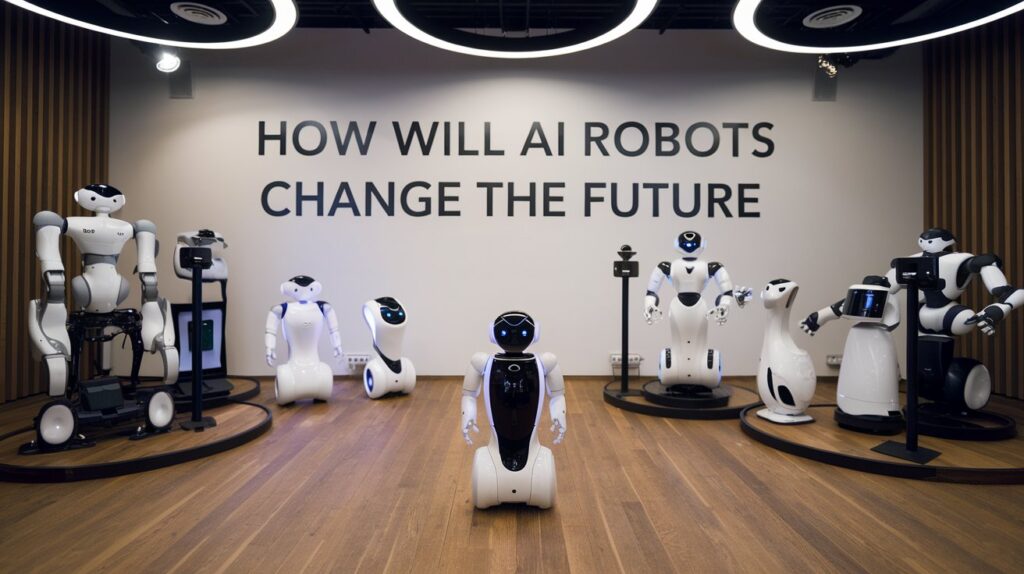
As we stand on the brink of a new era defined by AI robots, it is essential to contemplate the multifaceted changes they will bring to various sectors, from healthcare to education. These advanced technologies promise unprecedented efficiency and innovation, yet they also pose significant challenges, such as potential job displacement and ethical concerns surrounding data privacy. The implications of these developments extend beyond mere technological advancement, prompting a critical examination of our societal structures and workforce dynamics. What will this transformation mean for our future, and how can we navigate the complexities it introduces?
How Will AI Robots Change the Future audio file
Key Takeaways
- AI robots are projected to automate up to 30% of jobs by the mid-2030s, reshaping the workforce landscape significantly.
- In healthcare, AI robots enhance diagnostic accuracy, surgical precision, and patient monitoring, improving overall patient care efficiency.
- The manufacturing sector will see increased productivity and reduced labor costs as AI robots handle repetitive tasks and collaborate with human workers.
- AI robots will revolutionize education by providing personalized learning experiences and real-time analytics, enhancing student engagement and teacher effectiveness.
- Ethical concerns, including job displacement and data privacy issues, will necessitate robust regulatory frameworks to ensure equitable AI benefits across society.
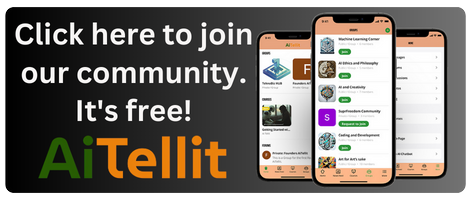
Evolution of AI and Robotics
Since the mid-20th century, the evolution of artificial intelligence (AI) and robotics has been marked by significant milestones that have shaped their development and integration into modern society.
The groundwork for AI was laid in the 1950s, with Alan Turing‘s foundational theories and John McCarthy’s establishment of AI as an academic discipline in 1955. An early achievement in AI occurred in 1951 when Christopher Strachey developed a checkers program, demonstrating the potential for machines to engage in strategic thinking.
Fast forward to 1997, when IBM’s Deep Blue defeated chess grandmaster Garry Kasparov, highlighting the extraordinary capabilities of AI in problem-solving.
The 2010s ushered in advancements in deep learning technologies, which revolutionized natural language processing and image recognition, enabling more sophisticated applications in robotics.
As a result, the robotics industry is poised for significant growth, projected to reach a market value of $260 billion by 2030. This surge is largely driven by the integration of AI into service robots that can perform complex tasks across various sectors, illustrating the profound impact of these technological advancements on society.
Benefits of AI Robots
The integration of AI robots into various sectors offers numerous benefits that greatly enhance operational efficiency and productivity. By automating repetitive and hazardous tasks, these advanced machines free human workers to engage in more complex and creative activities, leading to improved job satisfaction and innovative outcomes.
- In the healthcare industry, AI robots assist in surgeries and patient monitoring, resulting in higher diagnostic accuracy and faster drug discovery, ultimately enhancing patient outcomes.
- The implementation of AI robots in manufacturing reduces labor costs while increasing output, with predictive analysis further optimizing equipment maintenance and performance.
- AI-driven customer service solutions, such as chatbots, efficiently handle inquiries, greatly reducing wait times and bolstering customer satisfaction, allowing human agents to resolve more complex issues.
As AI robots continue to evolve, their anticipated contributions to economic growth are substantial, with the global robotics market projected to reach $260 billion by 2030, primarily fueled by advancements in service robots.
Challenges and Concerns

As AI robots become increasingly integrated into various sectors, significant challenges and concerns emerge, particularly regarding job displacement, ethical dilemmas, and data privacy.
Projections indicate that a substantial portion of the workforce may face job losses due to automation, while ethical questions arise surrounding the deployment of AI in sensitive applications, such as military use.
Additionally, the extensive data requirements for AI training amplify consumer anxieties over privacy rights and data management practices, necessitating a thoughtful examination of these critical issues.
Job Displacement Risks
Facing the rapid advancement of AI technologies, concerns about job displacement have intensified across various sectors. The potential for automation to supplant human roles raises alarms about significant job losses, particularly in manual labor. Studies indicate that nearly one-third of tasks across occupations may be automated, with manufacturing jobs being especially vulnerable.
- An estimated 44% of workers could face job losses by 2028 due to skill disruption from AI automation.
- Approximately 20 million manufacturing jobs could vanish by 2030 as robots take over repetitive tasks.
- Lower-skilled jobs are at a higher risk of automation, while demand for machine learning specialists is expected to rise.
- The pressing need for upskilling efforts is essential to bridge the skills gap and prepare the workforce for evolving demands.
These trends underscore the necessity for proactive measures in the labor market to mitigate the impacts of job displacement. Addressing the skills gap through targeted upskilling initiatives can empower workers to shift into roles that leverage human creativity and problem-solving—qualities that remain challenging for AI technologies to replicate.

Ethical Dilemmas Ahead
Job displacement is only one facet of the complex landscape shaped by the rise of AI technologies; ethical dilemmas are increasingly coming to the forefront. The automation of tasks is not merely a matter of efficiency; it raises significant concerns about accountability and the potential for economic inequality. As projections indicate that up to 44% of workers may face job losses by 2028, particularly impacting lower-skilled workers, the need for robust regulatory frameworks becomes critical.
The table below highlights key ethical dilemmas associated with AI deployment:
| Ethical Dilemma | Impact on Society | Need for Regulation |
|---|---|---|
| Job Displacement | Increased unemployment rates | Protect affected workers |
| Bias in AI Decisions | Discriminatory outcomes in hiring and law | Guarantee fairness and equity |
| Economic Inequality | Widening gap between classes | Promote inclusive growth |
AI applications possess the potential to perpetuate existing human biases, leading to discriminatory practices. Addressing these ethical dilemmas is essential to guarantee that the benefits of AI technologies are equitably distributed and do not exacerbate societal challenges.
Data Privacy Concerns
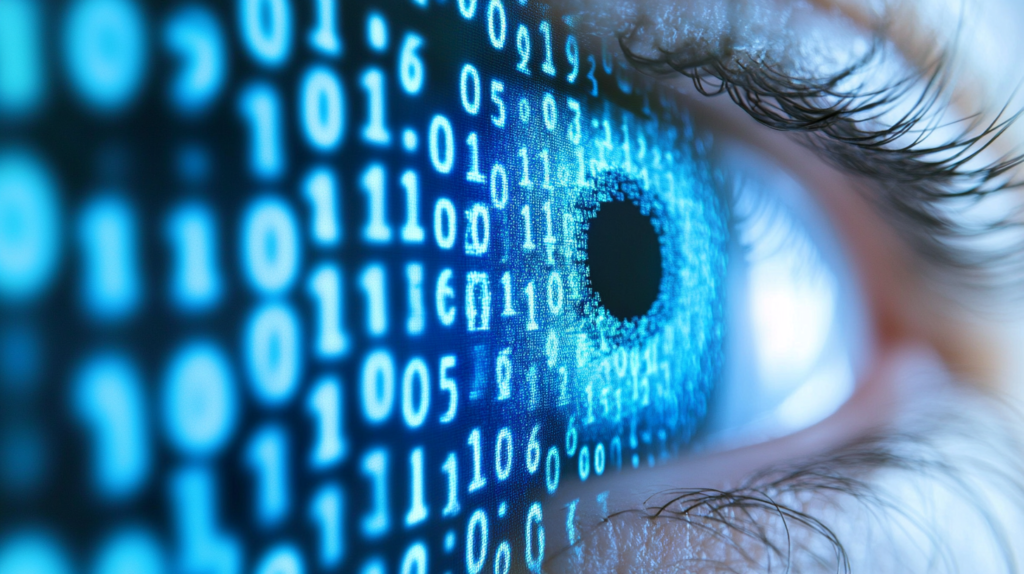
The rise of AI robots in various sectors brings forth an urgent reevaluation of data privacy concerns that are increasingly pressing in today’s digital landscape. As generative AI requires extensive data collection from users to function effectively, the implications for individual privacy cannot be overlooked.
The Federal Trade Commission (FTC) is currently investigating OpenAI for potential violations related to data collection, underscoring the regulatory scrutiny surrounding AI technologies.
Key issues surrounding data privacy include:
- The need for enhanced transparency in data collection practices.
- The importance of the AI Bill of Rights, which advocates for robust consumer rights.
- The risks associated with training AI systems on public data, which may expose sensitive information.
- The potential for biases embedded in training datasets to perpetuate discrimination.
Legislation aimed at strengthening data privacy protections is gaining traction, reflecting the public’s demand for responsible data handling by AI companies.
As AI technologies continue to evolve, addressing these data privacy concerns will be essential to maintaining trust and safeguarding consumer rights in an increasingly automated world.
AI Robots in Healthcare
Revolutionizing healthcare, AI robots are transforming the landscape of medical practice through advanced technologies that enhance diagnosis and treatment. By leveraging big data analysis, these intelligent systems improve disease identification, leading to more accurate and timely diagnoses.
The integration of AI in healthcare is paving the way for innovative solutions that address longstanding challenges. AI-powered virtual nursing assistants exemplify this shift, enabling remote patient monitoring that enhances care delivery and facilitates better management of chronic conditions. This capability not only improves patient outcomes but also alleviates the burden on healthcare providers.
In addition, AI-driven robots are accelerating drug discovery processes, considerably reducing the time required to develop new medications and treatments. Robotic surgical systems represent another major advancement, allowing for minimally invasive procedures that boast high precision. This results in quicker recovery times and a reduced risk of complications for patients.
Moreover, the incorporation of AI robots is projected to enhance patient-provider interactions, fostering improved communication and satisfaction rates. Overall, the integration of AI robots in healthcare stands to revolutionize the industry, promoting efficiency and better health outcomes for patients.
AI Robots in Manufacturing
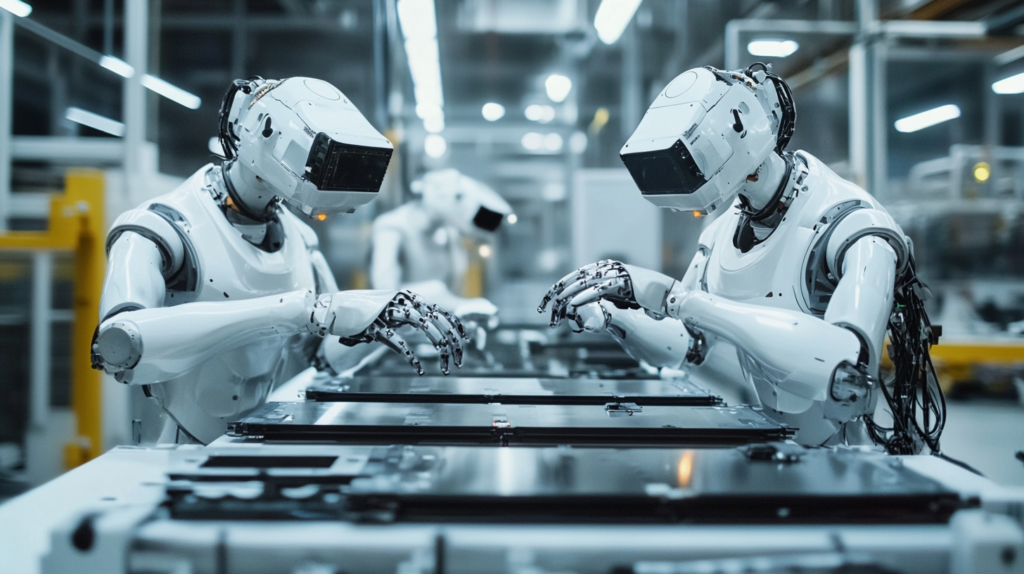
Significant advancements in AI robots have reshaped the manufacturing sector, enhancing efficiency and precision across various processes. Since their introduction in the 1960s, AI-enabled robots have revolutionized manufacturing through automation, allowing for improved output in critical tasks such as welding, assembly, and material handling.
Key developments include:
- Integration of predictive analysis sensors to improve equipment maintenance
- Implementation of collaborative robots (co-bots) that work alongside human workers
- Significant reductions in labor costs while increasing production rates
- Projections estimating the robotics industry will reach $260 billion by 2030
These advancements not only contribute to higher productivity but also guarantee safety in industrial settings, as co-bots are designed to interact with human operators seamlessly.
The continuous innovation in AI technologies promises to drive further enhancements in manufacturing processes, leading to substantial improvements in overall performance and efficiency. Additionally, with automation expected to transform the industry by 2030, companies will increasingly rely on AI robots to maintain a competitive edge.
The future of manufacturing will certainly be shaped by these intelligent machines, marking a new era of productivity and operational excellence.
AI Robots in Education
The integration of AI robots in education represents a transformative shift towards personalized learning experiences that cater to the unique needs of each student.
By leveraging advanced machine learning and natural language processing, these technologies not only support individualized instruction but also enhance teacher efficiency by streamlining grading and administrative tasks.
As educators gain insights into student engagement and emotional states, AI robots facilitate timely interventions, ultimately enriching the learning environment and improving educational outcomes.
Personalized Learning Experiences
Personalized learning experiences in education are increasingly being enhanced through the integration of AI robots, which leverage advanced technologies such as machine learning and natural language processing. These innovations facilitate tailored educational journeys that cater to individual student needs, greatly boosting engagement and comprehension.
- AI robots provide personalized assistance, adapting to each student’s learning style.
- Automated tutoring systems allow learners to progress at their own pace, fostering independence and confidence.
- Real-time analytics assess student performance, enabling educators to customize instructional approaches effectively.
- Emotion detection technology helps identify when students struggle or lose interest, prompting timely interventions.
Through these adaptive instructional approaches, AI robots gather and analyze data to enhance educational outcomes. By providing immediate feedback and support, they enable a more interactive and responsive classroom environment.
This interaction not only empowers students but also alleviates administrative burdens for teachers, allowing them to concentrate on direct engagement with learners. As the integration of AI robots continues to evolve, the potential for improved student performance and a more personalized educational experience will certainly reshape the landscape of modern education.
Enhanced Teacher Support
A growing number of educators are discovering the transformative potential of AI robots in providing enhanced support within the classroom environment. These advanced technologies leverage machine learning and natural language processing to create personalized learning experiences, tailoring educational content to meet the individual needs of students. Such enhanced capabilities not only boost engagement but also lead to improved academic outcomes.
AI robots further enrich the educational landscape by automating administrative tasks, such as grading and attendance tracking. This automation allows teachers to dedicate more time to direct student interaction and personalized support, fostering a more nurturing learning atmosphere. Additionally, AI-enabled tutoring systems aid students in mastering concepts at their own pace, ensuring that no learner is left behind.
The integration of AI robots in education prepares students for a technology-driven future and cultivates essential skills for various career fields. Their ability to gauge student emotions through facial recognition technology enables teachers to identify disengaged learners and intervene effectively.
| Benefit | Impact on Education |
|---|---|
| Personalized Support | Tailored learning experiences |
| Automated Administrative Tasks | More time for teaching |
| Emotional Recognition | Improved student engagement |
Societal Implications of AI
Significant transformations in the workforce landscape are anticipated as AI robots become increasingly prevalent across industries. The integration of these technologies raises important societal implications, particularly concerning job displacement and income inequality.
As AI robots are projected to automate up to 30% of jobs by the mid-2030s, middle-income positions are at heightened risk, potentially creating a permanent underclass of unemployable individuals.
Key considerations include:
- The economic impact of AI robots may yield a 14% increase in global GDP by 2030, yet this growth could exacerbate existing economic disparities.
- Ethical concerns regarding algorithmic bias necessitate interdisciplinary guidelines to guarantee fairness and accountability in AI applications.
- Retaining the societal value of work will require a reevaluation of traditional employment roles and contributions to the economy.
- Robust retraining initiatives will be critical in equipping displaced workers with the skills needed to thrive in an automated landscape.
Future Trends in AI Robotics
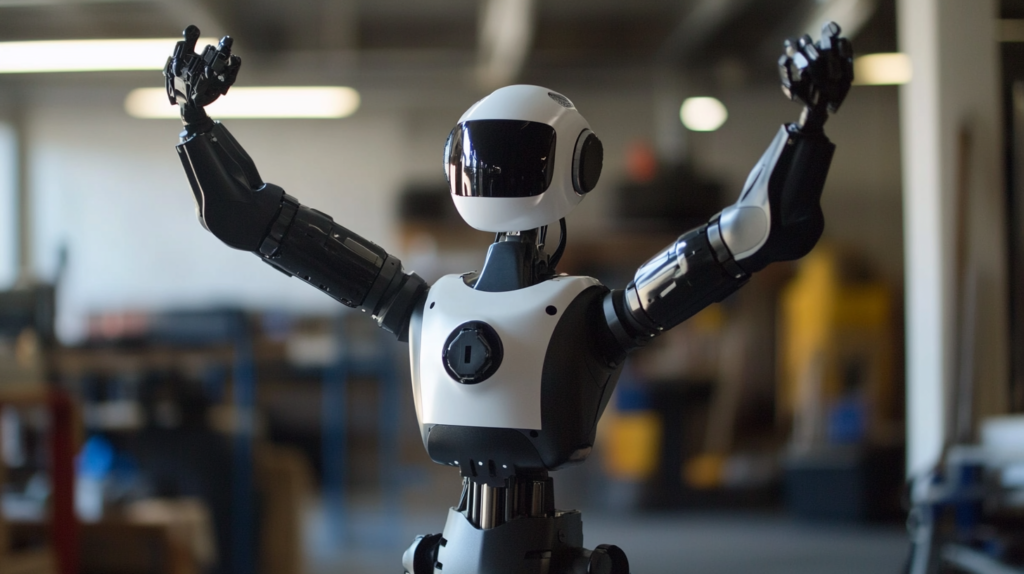
As industries gear up to embrace the next wave of innovation, future trends in AI robotics are set to reshape the operational landscape across various sectors. The integration of advanced AI capabilities will enable robots to perform increasingly complex tasks, enhancing human-robot collaboration in fields such as healthcare, manufacturing, and logistics.
By 2030, the global robot stock is projected to reach 20 million, largely driven by the rise of service robots tailored to both personal and industrial needs.
Collaborative robots, or co-bots, are expected to become a staple in workplaces, working alongside humans to improve efficiency and safety. These robots will utilize sophisticated AI advancements in object recognition and manipulation, allowing them to tackle tasks that require both dexterity and adaptability.
The economic implications of these technologies are profound, with automation projected to contribute to a 14% increase in global GDP by 2030, driven by significant productivity gains across various industries.

Frequently Asked Questions
What Will AI Robots Do in the Future?
In the future, AI robots will enhance healthcare assistance, support elderly care, improve industrial automation, optimize agricultural efficiency, facilitate disaster response, and serve as personal companions in smart homes, considerably transforming various sectors and daily life.
How Will Artificial Intelligence Change the Future?
Artificial intelligence will fundamentally reshape society through technological advancements, enhancing healthcare innovation, transforming education, and promoting environmental sustainability. However, ethical considerations surrounding job displacement and human-robot collaboration will greatly impact future societal dynamics.
How Are AI Robots Changing the World?
AI robots are transforming the world through innovative applications in healthcare advancements, education transformation, and smart homes. However, this robotic automation raises ethical considerations regarding job displacement and environmental impact, necessitating a balanced approach to integration.
What Will Happen in 2050 With Robots?
In 2050, robot advancements will drive workforce transformation, enhancing education and healthcare innovations. Ethical considerations will emerge regarding societal impacts, while robots will address environmental solutions and security challenges, fundamentally reshaping various sectors and daily life.
Conclusion
The integration of AI robots across various sectors signifies a pivotal shift in operational dynamics, promising enhanced efficiency and innovation. However, the associated challenges, including job displacement and ethical concerns, necessitate careful consideration and proactive strategies. A thorough understanding of the implications and potential of AI robotics will be essential in steering this transformative landscape. Ensuring equitable benefits while safeguarding data privacy will be critical in shaping a future where technology and society coexist harmoniously.







Responses